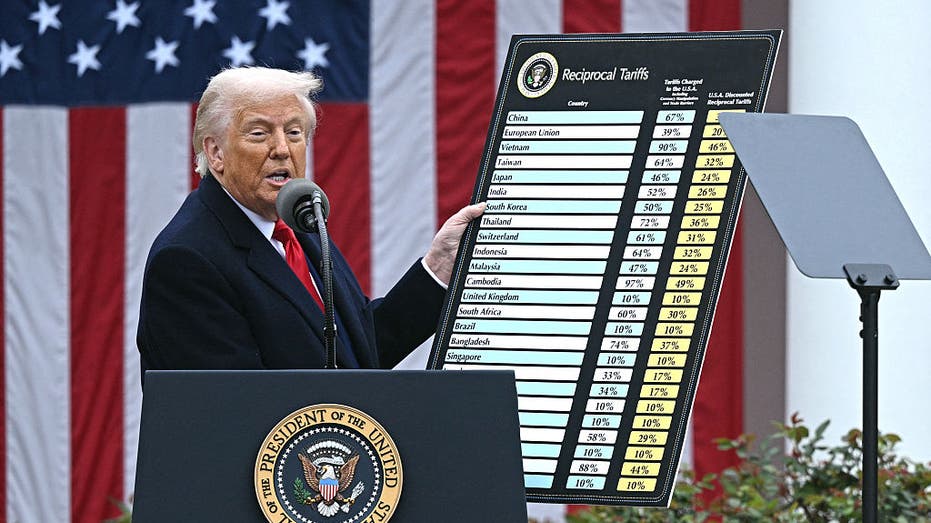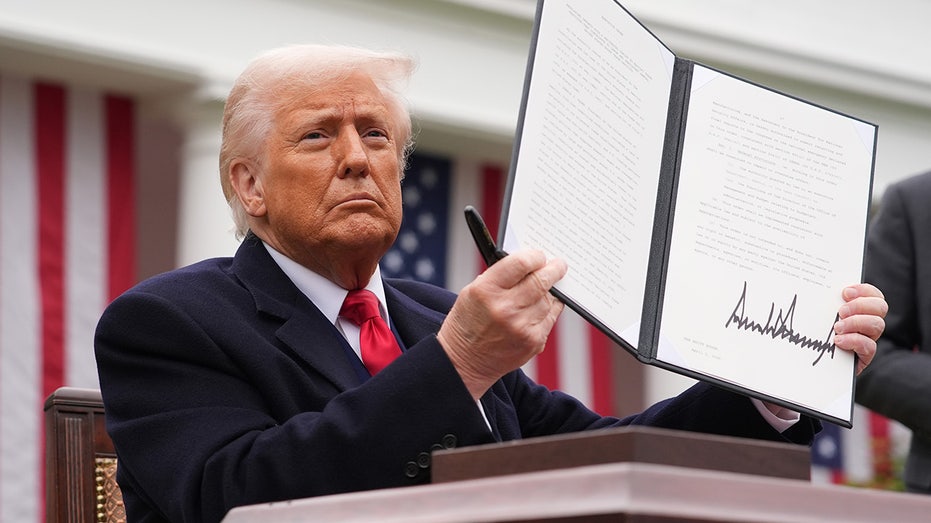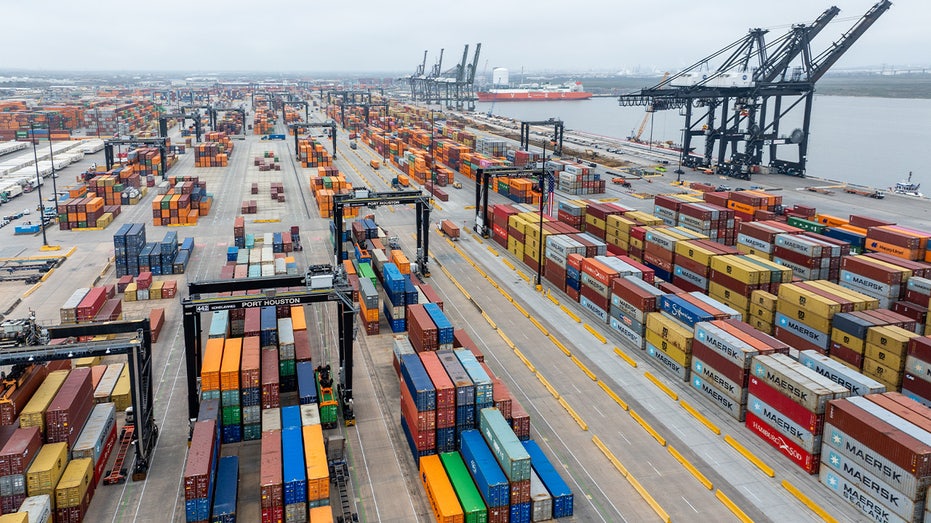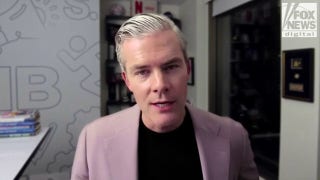Ex-Biden Treasury official rips Trump admin for citing his data on tariffs, says White House ‘got it wrong’
Brent Neiman argued Trump's reciprocal tariffs should be only one-fourth as high as they are
Retail investors have 'really stayed the course' amid tariffs, Empower CEO says
Empower CEO Edmund Murphy explains private investing in a 401(K)s and discusses the response to the tariff turmoil from retail investors.
Former Biden Treasury Department official Brent Neiman slammed the Trump administration on Monday for citing his research paper on tariffs, saying the White House "got it wrong."
In a New York Times guest essay, the economist addressed the fact that the Trump team cited him and three other experts’ study on tariffs to justify its own reciprocal tariff policy. However, Neiman insisted that President Donald Trump’s tariffs are much higher than they should be.
"The Office of the U.S. Trade Representative released its methodology and cited an academic paper produced by four economists, including me, seemingly in support of its numbers. But it got it wrong. Very wrong," he stated.
PENCE GROUP LASHES OUT AT TRUMP TARIFFS AHEAD OF 'LIBERATION DAY' EVENT: 'TAX ON AMERICAN CONSUMERS'

A former Biden treasury official criticized President Donald Trump for using his research to justify his reciprocal tariffs, stating that Trump got the data "wrong." (BRENDAN SMIALOWSKI/AFP via Getty Images / Getty Images)
Trump unveiled his planned reciprocal tariffs on imports from a variety of countries last week during his "Liberation Day" presentation from the White House Rose Garden. Trump presented a poster board displaying the combined rate of tariffs and other non-tariff barriers that other countries impose on U.S. exports, along with the new U.S. tariff rates he believes will break down the trade deficits between the U.S. and those countries.
The ex-Treasury figure wrote in the New York Times that the administration cited his paper on the subject in its "Reciprocal Tariff Calculations" report, though the economist argued that the president’s team used the research to come up with tariff rates much higher than Neiman and the other experts would have.
He added, "I disagree fundamentally with the government’s trade policy and approach. But even taking it at face value, our findings suggest the calculated tariffs should be dramatically smaller — perhaps one-fourth as large."
TRUMP, SENATE GOP BUDGET LEADERS HUDDLE AT WHITE HOUSE ON RECONCILIATION BILL

President Donald Trump displays a signed executive order imposing tariffs on imported goods during a "Make America Wealthy Again" trade announcement event in the Rose Garden at the White House on April 2. (Andrew Harnik/Getty Images / Getty Images)
Neiman began by arguing that it’s not a realistic goal to end trade deficits with these countries in the first place, as "Trade imbalances between two countries can emerge for many reasons that have nothing to do with protectionism."
He provided an example, stating, "Americans spend more on clothing made in Sri Lanka than Sri Lankans spend on American pharmaceuticals and gas turbines. So what? That pattern reflects differences in natural resources, comparative advantage and development levels. The deficit numbers don’t suggest, let alone prove, unfair competition."
The "tariff formula assumes that a tariff placed on one country won’t affect imports from any others and ignores any implications for exports. These assumptions may work for an action against one small trade partner, but not for the broad salvo announced last week," he wrote.
Neiman added, "A large tariff on Japanese auto parts could cause an increase in demand for imports from Mexico and vice versa. And the tariffs clearly invite retaliation and may over time increase the dollar’s value, both factors that would most likely depress U.S. exports."
CLICK HERE FOR MORE COVERAGE OF MEDIA AND CULTURE

A former Biden Treasury Department official says President Trump's trade tariffs do not take all economic factors into account. (Photo by Brandon Bell/Getty Images / Getty Images)
The former Treasury figure also explained how in his team’s research on tariffs placed on Chinese exports in 2018 and 2019, a tariff of 20% would increase the price of goods for importers by 19%. This number represents the "pass-through" rate plugged into the formula Neiman worked on. In this case, it’s a 95% pass-through rate.
The economist wrote that the Trump team used the formula but used a 25% pass-through rate for reasons he said he can't explain. "Where does 25 percent come from? Is it related to our work? I don’t know," he said.
"Had the trade office instead used a value closer to the 95 percent number from our work, as I believe it should have done, the computed tariffs would have been as little as one-fourth of what they are," Neiman concluded.
CLICK HERE TO GET THE FOX NEWS APP
The White House did not immediately reply to Fox News Digital’s request for comment.




















